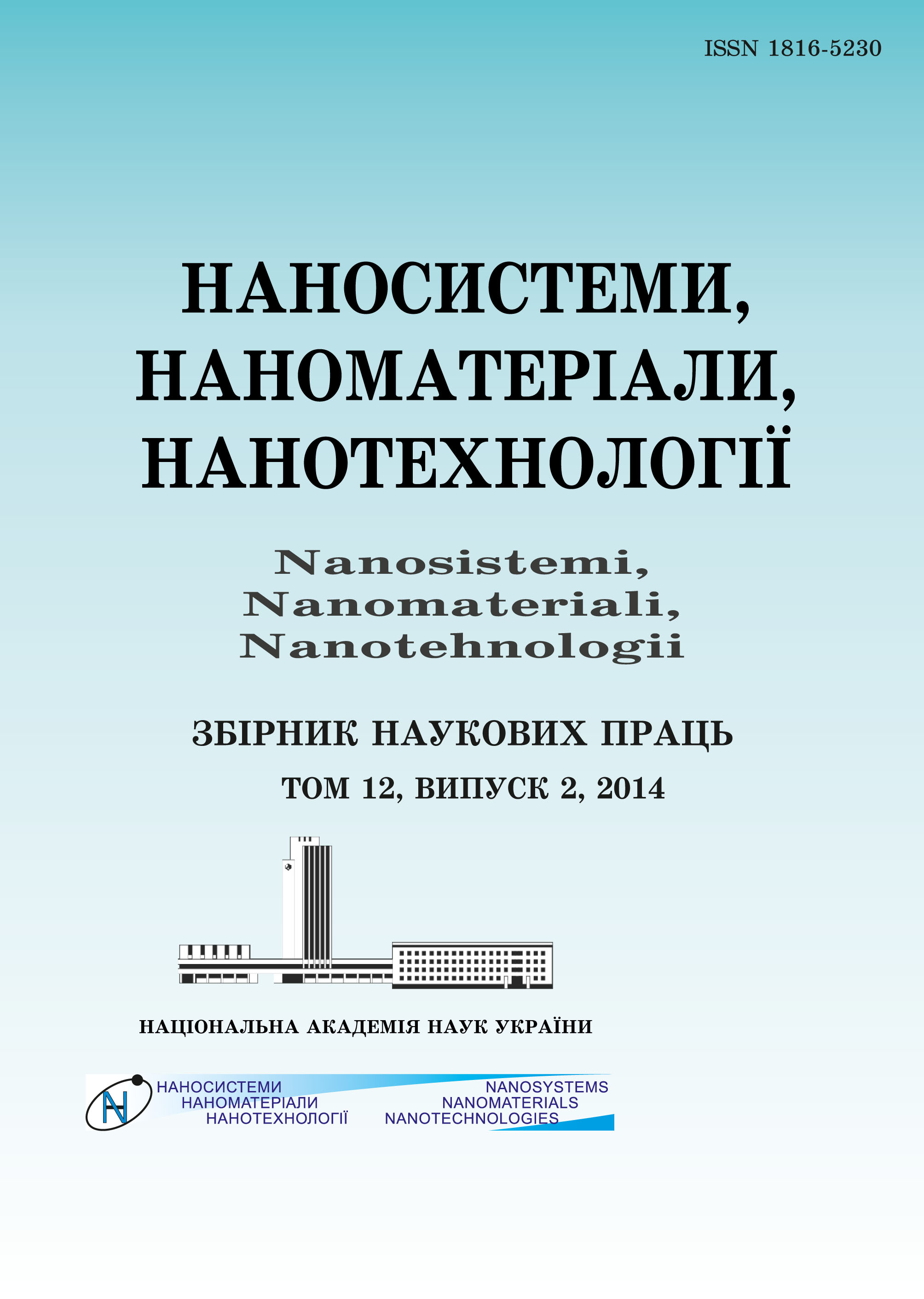|
|
|||||||||

|
Year 2024 Volume 22, Issue 3 |
|
|||||||
|
|||||||||
Issues/2024/vol. 22 /issue 3 |
|
B. TURKO, V. VASIL’EV, B. SADOVYI, R. BIHUN, I. PYLYPIV,
V. KAPUSTIANYK, and D. LEONOV
Electrophysical Properties and Thermal
Conductivity of Composite Based on Zinc Oxide and Reduced Graphene Oxide (1 vol.%)
637–642 (2024)
PACS numbers: 65.80.Ck, 66.70.Lm, 72.80.Tm, 81.05.ue, 81.07.Wx, 84.32.Tt
The thermal conductivity of the composite materials based on the commercial ZnO micropowder with reduced graphene oxide (1 vol.%) powder dispersed in the polymethylsiloxane (silicone oil) is measured using the radial heat-flow method. The thermal conductivity of the composite material based on the commercial ZnO micropowder with an average particle size of 50 µm and reduced graphene oxide is found to be 9.4 W/(m•K). At room temperature, the values of the dielectric permittivity at the measuring electric-field frequencies of 50 Hz and 1 MHz and the specific volume electrical resistance for the composite are obtained. An increase in the values of both the coefficient of thermal conductivity and the dielectric constant as well as a decrease in the specific volume electrical resistance due to a change in the volume fraction of reduced graphene oxide in the composite from 0.5 vol.% up to 1 vol.% are recorded
KEY WORDS: reduced graphene oxide, zinc oxide, composites, thermal conductivity, dielectric constant, specific volume electrical resistance
DOI: https://doi.org/10.15407/nnn.22.03.637
REFERENCES
- J. Khan, S. A. Momin, and M. Mariatti, Carbon, 168: 65 (2020); https://doi.org/10.1016/j.carbon.2020.06.012
- W. Xing, Y. Xu, C. Song, and T. Deng, Nanomaterials, 12: 3365 (2022); https://doi.org/10.3390/nano12193365
- B. Turko, V. Vasil’ev, and V. Kapustianyk, Nanosistemi, Nanomateriali, Nanotehnologii, 21: 569 (2023); https://doi.org/10.15407/nnn.21.03.569
- S. Ali, F. Ahmad, P. S. M. Yusoff, N. Muhamad, E. Onate, M. R. Raza, and K. Malik, Composites Part A: Applied Science and Manufacturing, 144: 106357 (2021); https://doi.org/10.1016/j.compositesa.2021.106357
- P. Huang, Y. Li, G. Yang, Z.-X. Li, Y.-Q. Li, N. Hu, S.-Y. Fu, and K. S. Novoselov, Nano Materials Science, 3: 1 (2021); https://doi.org/10.1016/j.nanoms.2020.09.001
- Q. Ge, J. Chu, W. Cao, F. Yi, Z. Ran, Z. Jin, B. Mao, Z. Li, and K. S. Novoselov, Advanced Functional Materials, 32: 2205934 (2022); https://doi.org/10.1002/adfm.202205934
- D. D. L. Chung, Materials Chemistry and Physics, 309: 128432 (2023); https://doi.org/10.1016/j.matchemphys.2023.128432
- R. Kamatchi and K. G. Kannan, International Journal of Renewable Energy Research, 8: 313 (2018); https://doi.org/10.20508/ijrer.v8i1.6766.g7305
- Y. Zeng, T. Li, Y. Yao, T. Li, L. Hu, and A. Marconnet, Adv. Funct. Mater., 29: 1901388 (2019); https://doi.org/10.1016/j.jallcom.2010.03.076
- W. Liang, X. Ge, J. Ge, T. Li, T. Zhao, X. Chen, M. Zhang, J. Ji, X. Pang, and R. Liu, Nanomaterials, 9: 938 (2019); https://doi.org/10.3390/nano9070938
- B. I. Turko, V. Â. Kapustianyk, V. P. Rudyk, and Y. V. Rudyk, J. Nano- Electron. Phys., 8: 02004 (2016); https://doi.org/10.21272/jnep.8(2).02004
 This article is licensed under the Creative Commons Attribution-NoDerivatives 4.0 International License ©2003—2024 NANOSISTEMI, NANOMATERIALI, NANOTEHNOLOGII G. V. Kurdyumov Institute for Metal Physics of the National Academy of Sciences of Ukraine. E-mail: tatar@imp.kiev.ua Phones and address of the editorial office About the collection User agreement |